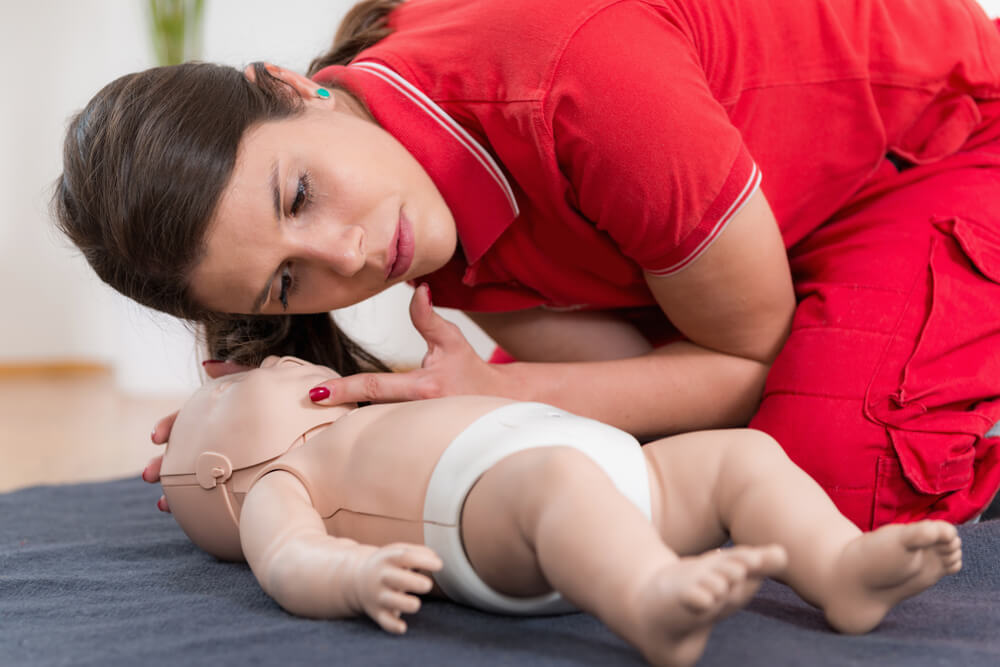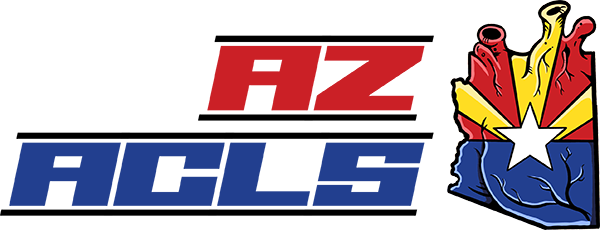
Why Did the Steps of CPR Change from A-B-C TO C-A-B
A person can have a cardiac arrest at any time. Approximately 383,000 cardiac arrests occur outside the hospital. Eighty-eight percent of these attacks happen at home. Most victims of cardiac arrests do not have underlying conditions like heart disease or high blood pressure.
You are more likely to give CPR or cardiopulmonary resuscitation to someone you know and love at home. Only 32% of heart attacks happen outside the home where an unknown bystander helps the victim. Knowing CPR is essential. Only 8% of the victims who have a cardiac arrest outside the hospital survive.
What Does CAB Mean in CPR?
Cardiac arrest happens when the blood supply to the heart gets cut off. An individual will go into cardiac arrest when electrical impulses inside the heart become chaotic and stop beating.
In 2010, the American Heart Association changed its guidelines and rearranged the CPR steps from A-B-C to C-A-B.
A-B-C stands for airway, breathing, and compressions. C-A-B means give chest compressions first, open the airway, and then breathe. When putting these steps into action, it is vital to remember the steps and what does cab mean in CPR.
 Blood Flow Is Key
Blood Flow Is Key
You may have gone diving in a local swimming pool, lake, or ocean. When you are doing a shallow dive, you hold your breath for a couple of minutes and then come back to the surface of the water and breathe in air.
Likewise, a person who experiences cardiac arrest can go one to two minutes without having to breathe. Sufficient oxygen remains resident in the bloodstream for a few minutes. A person who has suffered cardiac arrest needs to get their blood supply moving again.
Lack of blood supply reduces chances for survival. Putting resuscitative breathing first hinders chest compressions, which could lead to more delays.
On top of this, a person may have to look for a CPR mask. Most people are hesitant to perform certain aspects of CPR like mouth-to-mouth resuscitation. Being hesitant about performing certain steps for CPR can cause an unconscious victim to lose several seconds of precious time.
For these reasons, the AHA changed the sequence from A-B-C to C-A-B. A bystander could immediately begin chest compressions, which are 30 compressions every 18 seconds, or 100 to 120 compressions per minute.
When stopping chest compressions to perform rescue breathing, the air pressure inside the chest cavity is lower. This causes blood circulation to slow down. By doing the chest compression first, the victim gains 30 seconds of valuable time. The ROSC method, or Return to Spontaneous Circulations, is a win-win for the helpful bystander and the victim.
By using the C-A-B and the compression-only method, more patients can survive cardiac arrest. Of course, the C-A-B model is only applicable for adults who suddenly fall into cardiac arrest. The AHA still recommends that children, drug overdose victims, drowning victims, and asphyxia cases still obtain regular CPR.
Compression-Only CPR
Every five years, the AHA establishes new guidelines. In 2015, many 911 agents were guiding bystanders on how to administer CPR in emergency situations. The AHA thought it best that people untrained in CPR should not give assistance according to the C-A-B method. Instead, the untrained bystander should only do chest compressions.
Infants and small children need mouth-to-mouth resuscitations. However, most adults and teenagers will not need mouth-to-mouth resuscitations under normal circumstances.
Here are the following steps to perform compression-only CPR.
- First, ask the victim if he or she is all right. Check for breathing and signs of life. The person may have experienced cardiac arrest.
- If there is not a response, have another person immediately call 911. If available, get the AED, or automated external defibrillator.
- Make sure the person on the ground is lying down, straight on the back.
- Place the heel of your dominant hand on the center of the chest. Put the other hand over the dominant hand and interlock the fingers.
- Make sure to keep your arms straight.
- Lean over the person and begin chest compressions.
- Compress the chest with a depth of 2 inches.
- Compress hard, at two chest compressions every second.
- Compress the chest 100 to 120 times every minute.
- Recoil completely with each chest compression.

AED
The AED massages the heart and shocks it back into function. Turn it on and then follow the voice commands. You would attach the dual pads to the patient’s bare chest and then press the appropriate buttons on the device when told so by the voice command response. It could take five to 10 minutes for an ambulance or assistance to arrive to further assist the unconscious victim.
Steps of CPR
ABC CPR is a little different from compression-only CPR. The ABC CPR method is for trained bystanders.
- You see a victim on the ground, unconscious.
- Speak to the victim and say, “Are you all right?”
- Have another bystander call 911 promptly for assistance.
- Perhaps the victim is lying on the stomach. Turn the person over so that he or she is lying on the back.
- The person should be lying on a hard, flat surface.
- Check for pulse and breathing.
- Time to start chest compressions.
- Keep arms straight and elbows locked.
- With palms flat, place one hand on top of the other hand in an interlocking position and start chest compressions.
- Compress the chest two inches deep, 30 times.
- After 30 strong compressions, it is time to give breaths.
- Tilt the head back, lift the chin, and pinch the nose. That way, no air escapes the passageway.
- While pinching the nose, gently place your mouth over the victim’s mouth and give two slow breaths. This should be just enough breath to make the victim’s chest rise.
- Afterward, continue giving CPR with 30 compressions and two breaths.
- Continue the steps of CPR until you see signs of life or until emergency services arrive.
ABC CPR Training
The American Heart Association has preferred that adults learn the hands-only CPR method since 2008. CPR training has been ongoing since 1740. According to the AHA, there are 16 million people trained in the updated CPR method annually with over 400,000 certified instructors. Prepare yourself for an emergency, and learn hands-only chest compression CPR, along with ABC CPR. Moreover, you can get additional hands-on training in CPR methods for infants and children.
Do you feel comfortable performing first-time CPR? It is good to get training in CPR C-A-B. We offer personalized training sessions for individuals and groups. Call today and make an appointment.

No Comments
Sorry, the comment form is closed at this time.